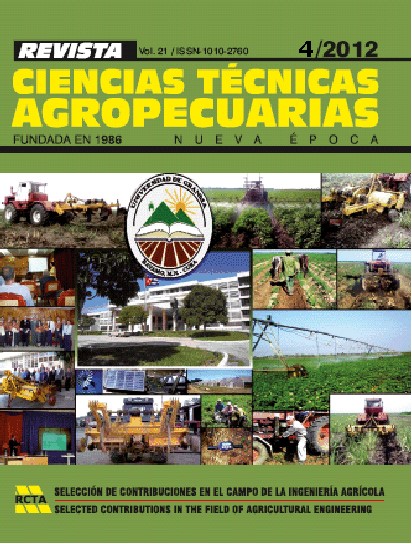La erodibilidad de los principales suelos de la cuenca
Main Article Content
Abstract
La erosión hídrica es el proceso de degradación más extendido en los suelos cubanos con más del 43,3% del área agrícola entre fuerte y medianamente erosionada. Una de las regiones fuertemente afectadas por la erosión hídrica es la Cuenca del Río Cuyaguateje localizada en la provincia de Pinar del Río. Esta región se caracteriza por un relieve ondulado y suelos susceptibles a la erosión. En este trabajo se presenta el resultado de 18 simulaciones de lluvia realizadas en la subcuenca V Aniversario en la parte norte del Río Cuyaguateje para suelos agrícolas de importancia en la región. En un análisis preliminar de la erodibilidad, se observa que todos los suelos no satisfacen el nomograma presente en el modelo RUSLE. Al estudiar la relación de la erodibilidad con diferentes propiedades de los suelos no se observan tendencias claras. El agrupamiento de los suelos en base al cociente Capacidad de Cambio de Base/Arcilla mejora considerablemente la correlación intragrupo, se examinan las tendencias por grupo y se evalúa la humedad al potencial de 1 500 kPa como indicador de la erodibilidad.
Article Details
Those authors that have publications with this journal accept the following terms:
1. They will retain their copyright and guarantee the journal the right of first publication of their work, which will be simultaneously subject to the License Creative Commons Attribution-NonCommercial 4.0 International (CC BY-NC 4.0) that allows third parties to share the work whenever its author is indicated and its first publication this journal. Under this license the author will be free of:
• Share — copy and redistribute the material in any medium or format
• Adapt — remix, transform, and build upon the material
• The licensor cannot revoke these freedoms as long as you follow the license terms.
Under the following terms:
• Attribution — You must give appropriate credit, provide a link to the license, and indicate if changes were made. You may do so in any reasonable manner, but not in any way that suggests the licensor endorses you or your use.
• NonCommercial — You may not use the material for commercial purposes.
• No additional restrictions — You may not apply legal terms or technological measures that legally restrict others from doing anything the license permits.
2. The authors may adopt other non-exclusive license agreements to distribute the published version of the work (e.g., deposit it in an institutional telematics file or publish it in a monographic volume) whenever the initial publication is indicated in this journal.
3. The authors are allowed and recommended disseminating their work through the Internet (e.g. in institutional telematics archives or on their website) before and during the submission process, which can produce interesting exchanges and increase the citations of the published work. (See the Effect of open access).
